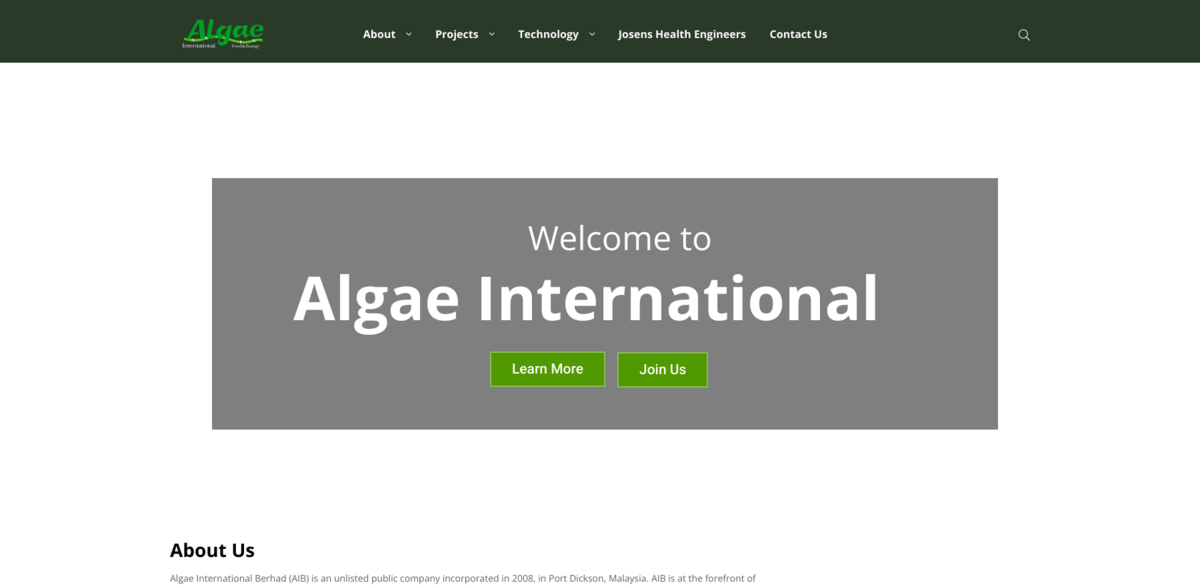Introducing Algae International’s Microalgae Projects
Algae International Berhad (AIB), founded in 2008 in Port Dickson, Malaysia, is pioneering clean, low-cost technology to grow and process microalgae. Their focus? Developing and commercializing microalgae production using Photo-Bioreactors—closed modules that cultivate pure microalgae monocultures. This approach is a game-changer compared to traditional open pond systems, offering a more controlled and efficient way to produce microalgae biomass.
Main Benefits of AIB’s Microalgae Technology
Here’s why AIB’s technology stands out:
- Closed systems developed by AIB produce microalgae at costs comparable to the super cheap open raceway ponds in China.
- These closed systems can grow hundreds of thousands of species, unlike open ponds that support only a handful of pure species.
- Protein production efficiency is about 300 times higher (that’s 30,000% better) on land and time compared to traditional grazing animals.
- AIB’s technology lowers production costs, improves yield quality, and offers more flexibility with inputs.
- NASA has trialed an earlier patented system by AIB, which has since been improved to be even more flexible and efficient.
AIB Farm: Tackling Global Food and Resource Challenges
With the global population booming, the pressure on Earth’s finite resources is intense. Traditional agriculture struggles to keep up, especially as more carbon-capturing trees are cleared to make way for farming. AIB’s farm project addresses this by using microalgae cultivation to provide sustainable, high-quality protein without the environmental toll of conventional agriculture. Their Floating Bed Method (FBM), first demonstrated in Linggi, Negeri Sembilan, successfully produced clean spirulina economically between 2011 and 2013.
Community Outreach Program: Feeding the Poorest with Healthy Food
AIB’s global health and community service club aims to inspire and motivate people to live healthier lives while contributing to a better society. The program focuses on feeding the poorest communities with the healthiest food—free of charge. This initiative not only promotes health but also fosters a sense of global responsibility and care.
Innovative Technology: From COSMAC to SILCOMS
Since mid-2014, AIB has been developing and demonstrating the COSMAC system, which produces algal biomass competitive with traditional agriculture and even crude oil. For smaller startups, AIB offers the Simple Low-Cost Microalgae Cultivation System (SILCOMS), making microalgae farming accessible and scalable. These technologies represent a comprehensive plan to deploy microalgae cultivation worldwide, adapting to various needs and scales.
Project Impact: Aligning with Sustainable Development Goals
- SDG 2: Zero Hunger – Providing sustainable, nutritious food sources.
- SDG 3: Good Health and Well-being – Promoting healthy diets through microalgae-based proteins.
- SDG 6: Clean Water and Sanitation – Recycling water through microalgae cultivation systems.
- SDG 12: Responsible Consumption and Production – Creating cyclic, profitable systems using organic waste and microalgae.
- SDG 13: Climate Action – Reducing deforestation and carbon footprint by offering alternative protein sources.
- SDG 15: Life on Land – Protecting ecosystems by reducing agricultural land use.
Closing the Loop: Sustainable Organic Waste Management
AIB’s technology doesn’t just grow microalgae—it integrates with organic waste management. Organic waste is first treated through Anaerobic Digestion (AD) to volatilize organics. Then, microalgae are grown to absorb the in-organics, resulting in water that, after minor treatment, can be reused. This creates a cyclic, economically sound system that’s not only sustainable but profitable enough to be replicated globally. It’s a smart, circular approach that benefits both the environment and the economy.





















